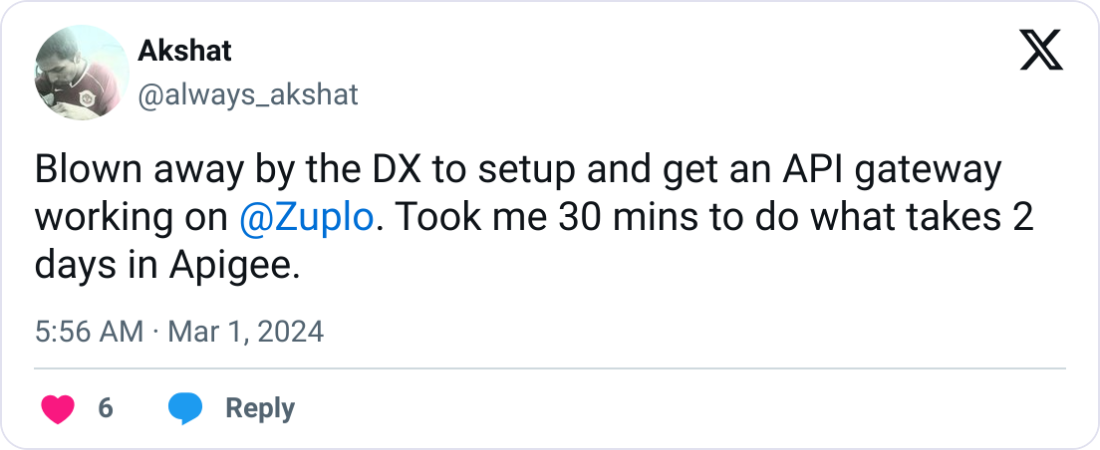Let's talk about API schema validation for effective contract testing—the unsung hero keeping your systems from falling apart when things get complicated. 👊
Think of your APIs as neighborhood hangout spots where all your systems meet to share data. As these gatherings grow, someone needs to keep things under control. That's where schema validation steps in—the bouncer checking IDs, enforcing the dress code, and ensuring everyone follows house rules. Without this bouncer, you're inviting chaos: mismatched data expectations, system crashes, and potential security breaches.
API contracts act as membership agreements that everyone signs before joining the club. They define exactly what requests and responses should look like, and when both sides honor them, everything runs smoothly.
Today, we'll show you why API schema validation isn't just some boring technical requirement—it's your secret weapon for building APIs that don't break, stay secure, and perform like champions.
- The Shield Your API Deserves: Understanding Schema Validation
- Beyond Testing: How Schema Validation Powers Effective Contract Testing
- Power Tools: Effective Validation Techniques That Actually Work
- Validation Victory: Best Practices That Save Developer Sanity
- Overcoming Obstacles: Solutions to Common Validation Challenges
- From Theory to Practice: Implementing Validation That Works
- The Productivity Boost: How Validation Transforms Development
- Your Next Steps: Putting Validation to Work
The Shield Your API Deserves: Understanding Schema Validation
Schema validation isn't just another step in your development process—it's your first line of defense against API chaos. When you validate early, you're catching problems while they're still minor annoyances rather than production-crashing disasters.
Think about it—would you rather find out your API is receiving malformed data during testing or when your biggest customer's system crashes during their peak sales hour? Yeah, we thought so.
What It Is And Why It Matters
API schema validation checks your data against a set of rules before it gets anywhere near your critical systems. It's like a security checkpoint that verifies credentials before granting access to your application's VIP section.
Why should you care about schema validation? Let's count the ways:
- Error Prevention: Catching problematic data early means fewer 2 AM emergency calls. When validation happens at the gateway level, problems get stopped before they ripple through your entire system.
- Security Enhancement: Your API is the front door to your data kingdom. By strictly checking inputs and preventing bad inputs, you're blocking potential injection attacks before they can even get started.
- Consistency Assurance: We've all seen different teams interpreting API requirements differently, leading to integration nightmares. Schema validation enforces one truth across all systems, making integration headaches disappear.
- Faster Development and Debugging: With clear schemas, developers know exactly what to expect. When something goes wrong, validation errors point directly to the problem instead of making you hunt through logs like a digital detective.
Some Concepts to Remember
Before we move on, let's break down the essentials without drowning in jargon:
- Schemas: Think of schemas as architectural blueprints for your API data. They define what fields should exist, what type each field should be, and what constraints apply. Good schemas are requirements, not suggestions, and are essential for consistent API design.
- Contracts: These are promises between providers and consumers. When you publish an API, you're saying, "Send me requests in this format, and I'll send back responses in that format." Break that promise, and integration falls apart.
- Specifications: While schemas focus on data structure, OpenAPI specifications describe the entire API behavior, including endpoints, methods, authentication requirements, and data formats.
Two formats dominate the schema validation world:
- JSON Schema: The flexible heavyweight for defining complex validation rules for JSON data.
- OpenAPI: More than just a schema format, it provides a complete framework for describing API structures and behaviors.
Beyond Testing: How Schema Validation Powers Effective Contract Testing

Contract testing plays a crucial role in ensuring API reliability throughout the lifecycle. By verifying that providers and consumers can successfully communicate according to agreed-upon rules, contract testing prevents integration issues and maintains consistency across different systems, forming a key part of end-to-end API testing.
API schema validation isn't just another box to check—it's your insurance policy against integration disasters. When your API is mission-critical (and let's face it, which one isn't these days?), you need confidence that changes won't break consumer applications.
Contract Testing Overview
Contract testing sits in the sweet spot between unit testing and integration testing, focused on one thing: making sure your API and its consumers speak the same language.
Think of it as relationship counseling for your API and its consumers—ensuring both sides understand expectations and communicate effectively. This approach is particularly valuable when testing public APIs, as it helps ensure the contract between the API and its consumers is maintained.
What does contract testing verify? Three critical things:
- The API provider delivers exactly what it promised in the contract
- Consumers correctly use the API as specified
- Changes to either side don't secretly break their agreement
The beauty is that it lets teams work independently while still ensuring their components play nicely together—no more massive, coordinated testing efforts or finger-pointing when integrations fail.

Over 10,000 developers trust Zuplo to secure, document, and monetize their APIs
Learn MoreIntegration with Development Processes
Want to stop breaking things every time you deploy? Contract testing integrated into your CI/CD pipeline is your new best friend.
By automating contract tests in your build and deployment processes, you create a safety net that catches breaking changes before reaching production, delivering benefits like:
- Catching Problems Early: You find issues when they're easy to fix, not when customers are screaming.
- Immediate Feedback: Developers get instant notification when API changes might break dependencies.
- Confident Deployments: When contract tests pass, you know your changes won't break existing integrations.
- Enhanced Collaboration: Contract testing encourages provider-consumer collaboration, creating shared understanding of API behavior.
Tools like Pact or Postman make it straightforward to incorporate contract testing into existing workflows, fundamentally improving how your systems evolve together.
Power Tools: Effective Validation Techniques That Actually Work
Don't think of schema validation as just another tedious requirement—it's your first line of defense against API chaos. Proper validation catches data problems before they cause real damage, meaning fewer bugs, better security, and happier developers all around.
Schema Validation vs. Contract Testing
These related but different approaches both contribute to robust APIs:
Schema validation is like checking ID at the door—ensuring data shape and type match expectations. Contract testing takes a broader view, verifying that the overall API behavior meets expectations, including response codes, error handling, and business logic.
Both schema validation and contract testing can be defined using OpenAPI specifications, which describe your API in a standardized format.
Here's how they work together:
- Schema Validation: Catches structural issues immediately, preventing obviously wrong data from entering your system.
- Contract Testing: Ensures the entire API interaction works as expected, beyond just data formats.
Tools and Technologies
Want to implement rock-solid schema validation? These tools make it possible:
- Zuplo: A programmable API gateway that supports schema validation, rate limiting, and built-in developer tools for secure and scalable API development.
- JSON Schema: The industry standard for defining and validating JSON data structures.
- OpenAPI (Swagger): A comprehensive approach to API design that includes built-in schema validation capabilities.
- Postman: The Swiss Army knife of API
development with powerful schema validation features.
Cypress with AJV Validator: For serious end-to-end testing, this combination lets you validate responses against schemas right in your test suites. - Pact: The gold standard for consumer-driven contract testing, ensuring API providers and consumers stay in sync.
Validation Victory: Best Practices That Save Developer Sanity
Let's be real—implementing schema validation isn't just about checking boxes. It's about creating APIs that developers actually want to use. Here are our battle-tested best practices:
- Validate Both Requests and Responses: Don't stop at validating what comes in—validate what goes out too. This prevents bad data from propagating through your system.
- Use Comprehensive Error Messages: Generic 400 errors are the worst. Instead, tell developers exactly what went wrong: "Field 'email' must be a valid email address" is infinitely more helpful.
- Implement Version Control for Schemas: APIs evolve, and that's fine—but breaking changes are not. Employing effective API versioning strategies allows you to version your schemas alongside your API to maintain backward compatibility.
- Automate Validation in CI/CD Pipelines: If you're still manually testing schema compliance, you're doing it wrong. Tools like Cypress with AJV Validator can automatically validate every response.
- Use Dynamic Schema Fetching: Keep validation rules in sync with your API by dynamically fetching schemas from your OpenAPI documents.
- Optimize for Performance: For high-volume APIs, validation overhead matters. Precompile schemas and consider caching validation results for similar requests.
- Implement Security Measures: Schema validation is a key security layer. Proper validation prevents injection attacks, data leakage, and other vulnerabilities by following API security best practices.
- Document Your Schemas: Use tools like Swagger UI to generate interactive documentation that shows exactly what data your API expects.
- Use Modular Schemas: Break complex schemas into reusable components for easier maintenance, especially for large APIs.
- Schedule Regular Schema Reviews: Your business evolves, and your schemas should too.
These practices aren't theoretical—they're drawn from real-world experience building and maintaining APIs that scale.
Overcoming Obstacles: Solutions to Common Validation Challenges
Schema validation isn't always smooth sailing, and even the best teams encounter challenges. The good news? We've seen these problems before and know how to solve them.
Common Challenges
- Schema Evolution: Your API evolves, but existing clients expect the old behavior.
- Handling Complex Data Structures: Deeply nested objects, polymorphic data, conditional fields—real-world data rarely fits into neat boxes.
- Performance Overhead: Thorough validation takes processing time. For high-volume APIs, even milliseconds matter.
- Maintaining Backward Compatibility: Your new schema is great, but what about all those clients using your original API?
- Security Considerations: Do your validation rules actually protect against common attack vectors?
Proven Solutions
We've tackled these challenges across hundreds of APIs:
- Schema Versioning: Version your schemas alongside API paths. This lets you evolve without breaking existing integrations.
- Consistent Documentation: Use tools that generate docs directly from schemas, ensuring what developers see is what your API enforces.
- Automated Testing Workflows: Integrate schema validation into your CI/CD pipeline to catch compliance issues before they reach production.
- Dynamic Schema Fetching: Keep validation fresh by fetching schemas directly from live OpenAPI documents during testing.
- Modular Schema Design: Break complex schemas into smaller, reusable components for easier maintenance.
- Clear Error Messages: Craft actionable error messages that tell developers exactly what's wrong and how to fix it.
- Performance Optimization: For high-throughput APIs, precompile schemas and prioritize validation of critical fields. Implementing API rate limiting can also help manage load and protect your system.
- Understanding API Constraints: Proper API request validation helps identify and mitigate issues such as large headers causing HTTP 431 errors.
From Theory to Practice: Implementing Validation That Works

Schema validation isn't just nice-to-have—it's essential for APIs that don't crumble under real-world usage. Let's get you set up with a validation system that actually works.
API Schema Validation: Step-by-Step Guide
- Define Your Schema: Start with a clear, comprehensive schema using JSON Schema or OpenAPI:
{
"type": "object",
"properties": {
"id": { "type": "integer" },
"name": { "type": "string" },
"email": { "type": "string", "format": "email" },
"age": { "type": "integer", "minimum": 18 }
},
"required": ["id", "name", "email"]
}-
Choose a Validation Tool: Pick a validation library that fits your stack (AJV for JavaScript, Pydantic for Python, etc.).
-
Integrate Validation in Your API Logic: Put validation at your API's front door, catching bad requests before they reach business logic.
-
Set Up Automated Testing: Add schema validation to your test suite:
it("validates the response schema", () => {
cy.request("GET", "/api/users").then((response) => {
expect(validateSchema(response.body, userSchema)).to.be.true;
});
});- Implement Error Handling: Transform validation failures into useful feedback.
- Version Your Schemas: Version schemas alongside API endpoints to maintain backward compatibility.
- Document Your Schema: Generate interactive documentation from your schemas using Swagger UI or ReDoc.
- Monitor Validation Errors: Track failures to identify common issues.
Handling Edge Cases
The devil's in the details with schema validation. Here's how to handle tricky edge cases:
- Flexible Schema Definitions: Use JSON Schema's features like
anyOf,oneOf, ornullablefor varying data structures. - Comprehensive Error Handling: Explain exactly what's wrong in validation errors.
- Boundary Testing: Test extreme values your API claims to support: maximum string lengths, integer boundaries, largest possible arrays.
- Null and Empty Value Handling: Be explicit about how your API treats nulls, empty strings, and empty arrays.
- Date and Time Formatting: Specify exact formats and handle time zones consistently.
- Internationalization: Test with actual multilingual content if your API handles user-generated text.
- Custom Validation Rules: Tools like AJV let you define custom validation functions for complex business rules.
The Productivity Boost: How Validation Transforms Development
Want to seriously level up your development process? Schema validation isn't just about catching errors—it's about transforming how your team builds and maintains APIs.
Reducing Debugging Time
Let's be honest—debugging is the worst part of development. Schema validation dramatically cuts that time down:
- Early Error Detection: Schema validation catches issues at the API gateway before they infect your entire system.
- Detailed Error Messages: Good validation tells you exactly why something failed, not just that it did.
- Automated Testing Integration: Hook validation into your test pipeline so every pull request gets automatically checked for schema compliance.
- Consistency Across Environments: Schema validation enforces the same rules everywhere, eliminating environment-specific mysteries.
We've seen teams cut debugging time by 40% or more just by implementing proper schema validation—time better spent building new features.
Ensuring Service Integrity
Your API isn't just code—it's a promise to consumers. Schema validation helps you keep that promise.
When your API returns unexpected data structures, consumer applications may show errors or, worse, silently process incorrect data, leading to corrupted databases or security breaches. Schema validation acts as your API's immune system, rejecting anything that doesn't match expectations.
From an operational standpoint, validation improves reliability by catching potential issues before they reach production. Security gets a major boost too—proper validation blocks real-world attack vectors that target input handling weaknesses.
Your Next Steps: Putting Validation to Work
API schema validation isn't just another technical requirement—it's your secret weapon for building APIs that developers actually want to use. By catching errors early, enforcing consistency, and providing clear guidance, validation transforms your API from a potential integration nightmare into a reliable, secure, and efficient service.
Remember—effective validation goes beyond basic type checking. It requires thoughtful schema design, clear error messages, and a strategy for handling API evolution while maintaining compatibility. When implemented correctly, you're not just checking data—you're creating a better developer experience for everyone who interacts with your API.
Ready to transform your API reliability and developer experience? Zuplo's code-first platform makes implementing these best practices remarkably straightforward. By validating requests at the gateway level, you create a security perimeter that protects all your backend services simultaneously, while automatic documentation generation keeps your API contracts clearly communicated to consumers. Sign up for Zuplo today and experience the difference that professional API management makes.